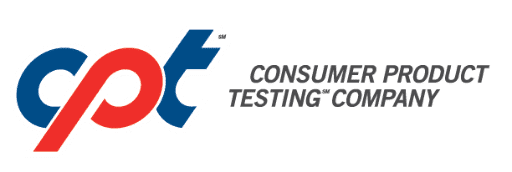Antimicrobial Preservative Effectiveness Testing
Government regulations require that the safety of pharmaceutical, cosmetic/personal care and OTC products be demonstrated prior to their introduction into the marketplace.
Certainly, there are many different aspects of product safety and one of the major requirements is that products are free from objectionable microorganisms.
How do these microorganisms (bacteria, yeast and mold) get into the products? There are a variety of ways:
- The raw ingredients may be contaminated with them.
- Improper cleaning and sanitization of the processing and filling equipment used in the manufacture or the packaging materials, such as bottles/jars, caps and cartons.
- Microorganisms can also be unintentionally introduced into the product over the course of routine use by the consumer.
Because some of these microorganism species pose health risks to humans, synthetic and natural antimicrobial preservatives are often added to such products to inhibit microbial growth and/or kill microorganisms.
Preservatives can pose toxicity risks, however, when added to formulations in excess. Thus, it is imperative that product manufacturers add preservatives in amounts sufficient to impede microbial growth but low enough to avoid toxicity in users.
How do manufacturers determine antimicrobial effectiveness?
Preservative Effectiveness testing can confirm which preservatives (or combinations thereof) and at what concentration(s) are appropriate for preventing microbial growth in a particular product formulation.
Antimicrobial Preservative Effectiveness Testing is well-documented in regulatory compendia such as United States Pharmacopoeia Chapter <51> “Antimicrobial Effectiveness Testing”, and similarly in other international compendia (European Pharmacopoeia (EP), and Japanese Pharmacopoeia (JP), Personal Care Product Council (PCPC) and ISO 11930. An overview of the Preservative Effectiveness testing process is described below.

How is Antimicrobial Preservative Effectiveness Testing performed?
The basic concept for Antimicrobial Preservative Effectiveness Testing is the same through the various methodologies utilized, and may be summarized as follows:
- The standard panel of test microorganisms used in most methods includes three strains of bacteria (Staphylococcus aureus, Escherichia coli, Pseudomonas aeruginosa), one mold strain (Aspergillus brasiliensis) and one yeast strain (Candida albicans). These are standardized strains, typically obtained from the American Type Culture Collection (ATCC). Other microorganisms may be added to those included within the standard panel. This may include microorganisms which have been isolated by an environmental monitoring program from a location within the manufacturing facility, or from a product found to contain the microorganism of concern. Microorganism isolated in this manner are often more resistant to the micro-biocidal effects of the preservative ingredient.
- The product formula is challenged by introducing a standard panel of microorganisms in the range of 100,000 to 1,000,000 organisms per gram or mL, and then incubated at controlled room temperature (20-25oC) for 28 days. A second challenge may be performed by re-inoculating the formulation again with the same microorganisms after the 28th day, and the process repeated for a total test period of 56 days.
- Enumeration of microorganism growth (or lack of it) is performed at specified time intervals during incubation as outlined by the test method that is being utilized. Most typical intervals are 2, 7, 14, and 28 days but other time points may be added depending on the method being followed.
- If the formulation successfully reduces the microbial numbers to the required levels using the acceptance criteria outlined by the method, then the formula is considered to be adequately preserved. The same criteria would apply to any additional organisms from environmental monitoring or product contamination that were utilized in the test.

Listed below are the most commonly utilized methods and a brief highlight of what differentiates each from the other.
- United States Pharmacopoeia <51> Antimicrobial Preservative Effectiveness Test: This is the compendia used primarily for pharmaceutical products. However, many personal care companies also utilize this method for their products as well. It segments the testing into product categories: Injections, Topical Products, Oral Products in aqueous bases, and antacid products. Most personal care items fit into the Topical Product Category.
- Personal Care Product Council (PCPC) Preservation Test of Water-Miscible Products: Although USP <51> is used by some for cosmetic risk assessment, the Personal Care Products Council (PCPC) Guideline methods serve as the nominal industry standard for cosmetics. Other PCPC methods are available, which evaluate the preservative efficacy of other personal care items such as wipes, anhydrous formulations, etc.
- European Pharmacopoeia (EP): Has three categories: Parenteral and Ophthalmic, Topical and Oral Preparations. This method uses only four microorganisms. The intervals evaluated depend on the category of the product.
- Japanese Pharmacopoeia: Similar to USP <51> but differs in the manner of microbial preparation.
- ISO 11930: Similar to USP <51>, the ISO 11930 method is written specifically for cosmetic products. It is quickly becoming the “go-to” test method for evaluating the preservative effectiveness of cosmetics and personal care products.
- Client Methods: In situations where a client has developed their own method for antimicrobial preservative effectiveness testing, their protocol can be adopted for their specific formulations.
Summary
When used wisely, synthetic and natural preservative systems will reduce or kill microorganisms present in a product due to accidental microbial contamination which may occur over the course of normal product use.
Antimicrobial Preservative Efficacy testing is essential for cosmetic, pharmaceutical and personal care product manufacturers to identify which preservative combination(s) and concentration(s) are appropriate for microbial growth prevention while minimizing undesirable preservative side effects. Moreover, preservative formulations must meet regulatory standards for the protection of human health and market approval.
Services Provided by CPTSM Labs
The Microbiology Department at CPTSM Labs performs all the Antimicrobial Preservative Effectiveness testing indicated above. Many more microbiological testing services are also provided, and a full list may be found at www.cptclabs.com.
In addition to Antimicrobial Preservative Effectiveness testing, other supporting departments are available at CPTSM to provide the ultimate in product support.


